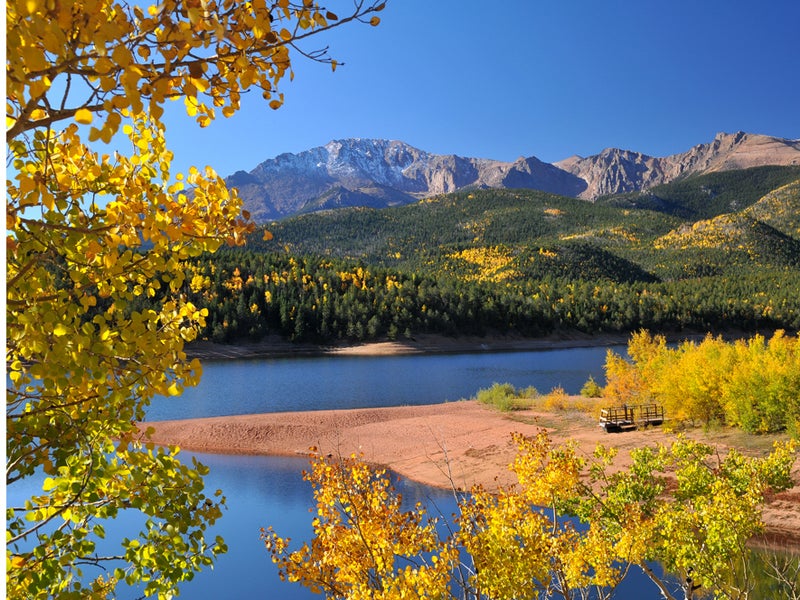Hikers and Wildlife Now Better Protected in the Pike-San Isabel National Forest
A recent Earthjustice settlement with the Forest Service will allow the public and wildlife experts a say in where and when motorized vehicles are allowed in the iconic Pike-San Isabel National Forest.

This page was published 10 years ago. Find the latest on Earthjustice’s work.
When I’m hiking on public lands and I see damage to fragile ecosystems caused by illegal motor vehicle use, it destroys my sense of peace and connection with unspoiled nature. I have seen high mountain lakes where all-terrain vehicles (ATVs) have destroyed fragile aquatic environments. Hearing the sounds of nature, such as the wind through the trees or the babbling of a mountain stream, are important aspects of why I hike. If ATVs are ridden illegally nearby, I lose this experience.
With over 2,200 miles of motorized routes open to the public in the Pike-San Isabel National Forest (PSI), it’s becoming harder and harder for hikers and wildlife to enjoy the sounds of silence. By not following its own management rules, the U.S. Forest Service improperly allowed motorized vehicle use on over 500 miles of roads and trails without first consulting the public or examining the potential environmental effects. Both of these steps are required by law when adding to or changing the motorized route system. Many of the added routes cross areas managed as winter range for big game animals, and many other routes are in critical habitat for wildlife protected by the Endangered Species Act.
Five conservation groups, represented by Earthjustice, challenged the Forest Service and finally reached a settlement in federal court. The settlement requires the Forest Service to develop a motorized vehicle plan and do a top-to-bottom review of vehicle use in the forest within five years—all in consultation with the public.
My wife Mary and I are members of the Quiet Use Coalition, based in Salida, Colorado, one of the five groups that spearheaded the Forest Service challenge. My interest in the rules governing vehicle use on public lands sprang from personal experience on my private land within the PSI. I own part of an old mining claim that has been in my family since 1880, and the area was being abused and damaged by illegal ATV riding.
ATVs were, and still are, riding illegally on Forest Service land adjacent to mine and then crossing my property. The routes crossing Forest Service land adjacent to mine are not classified as legal motorized routes. The motorized vehicle use on these routes and across my land was what led me to learn about how the Forest Service designates and manages motorized routes in the forest and to get involved in the legal case pressing the Forest Service for greater transparency.
When the Forest Service adds motorized routes without National Environmental Policy Act (NEPA) analysis or public input, quiet users like me are denied a chance to speak up about it and the decision ceases to be informed by science, as required. When the Forest Service follows the rules, doing NEPA analysis and taking public input, the long-standing Forest Service regulations work to allow for sustainable public use while protecting precious natural resources for the long term.
Mary and I are hopeful that, as the settlement terms are implemented, we will be able to return to non-motorized areas that have been violated and no longer have to endure the impacts of motorized use. We feel this is a victory for wildlife as well as quiet use, and we look forward to seeing a return to healthy habitat for big game and other species as the resource protections originally in place are now honored.
Earthjustice and their legal team did a great job representing us from start to finish, in what turned out to be a lengthy endeavor. We appreciate their guidance and clear communication, as well as the pressure they applied when necessary to move this lawsuit to an acceptable conclusion.
Perhaps Earthjustice attorney Ted Zukoski said it best:
“This settlement will get the Forest Service back on track, obeying its own rules that protect motorized and non-motorized users and the streams, forests and wildlife that millions of Coloradoans enjoy each year. It’s a step toward preserving what we love most about being in the forest — the beauty of a vibrant, healthy, wild place.”
Earthjustice’s Rocky Mountain office protects the region’s iconic public lands, wildlife species, and precious water resources; defends Tribes and disparately impacted communities fighting to live in a healthy environment; and works to accelerate the region’s transition to 100% clean energy.